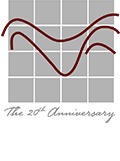
Post Conflict Urban Strategies: WARSAW
Warsaw is a city that has been damaged through history because of war but the most damages were given in World War 2 by Nazi Troops. During the war, %85 of the city was demolished. After war, Polish patriots encountered to build the old city by benefiting from paints, archived documents and Nazi’s Pabst plan. This report will cover pre-information Read More …











